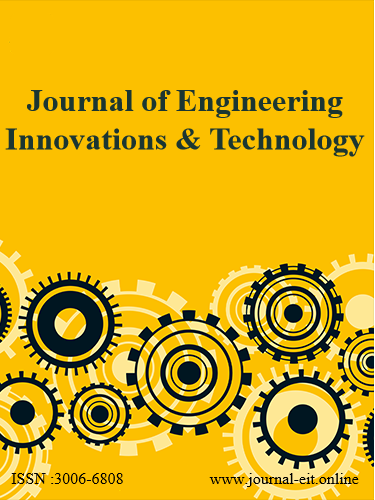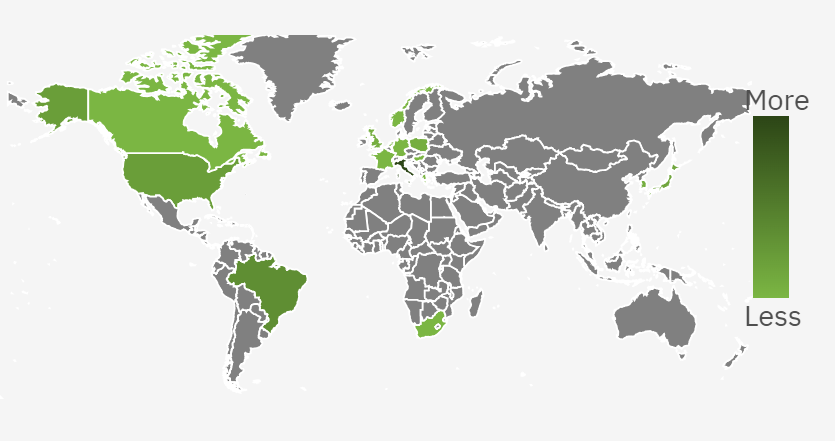 An open access journal
An open access journal
The Debris Flow Risk Zoning Assessment in the Parlung Zangbo River Basin of Tibet Based on GIS and AHP
Abstract
The Parlung Zangbo River Basin, located in the Tibet region, is a typical area prone to frequent debris flows. As a highly destructive geological hazard, debris flows pose a serious threat to the ecological environment and human activities in this basin. This paper aims to comprehensively assess the risk factors of debris flow in the Parlung Zangbo River Basin by integrating Geographic Information System (GIS) and Analytic Hierarchy Process (AHP), and to generate a debris flow risk zoning map. Firstly, the paper analyzes the main factors influencing the occurrence of debris flows in the basin, including topographic features (such as slope aspect, slope gradient, and Melton ratio), precipitation intensity, vegetation cover, and the nearest distance to faults. Based on this analysis, the AHP model is employed to assign weights to these factors and conduct consistency checks to ensure the scientific validity and reliability of the assessment results. The study results indicate that the Melton ratio, precipitation index, and slope aspect and gradient are the primary factors affecting the occurrence of debris flows, with varying degrees of influence across different areas. By applying the weights of these factors to the GIS platform, this study generates a debris flow risk zoning map for the Parlung Zangbo River Basin, providing a scientific basis for disaster prevention and planning in the region. The findings of this study not only hold significant implications for disaster control in the Parlung Zangbo River Basin but also offer valuable insights for debris flow risk assessment in similar geological environments.
Share and Cite
Article Metrics
References
- Wang Z, Hu K, Liu S. Classification and sediment estimation for debris flow-prone catchments in the Parlung Zangbo Basin on the southeastern Tibet[J]. Geomorphology, 2022, 413: 108348.
- Deng M, Chen N, Ding H. Rainfall characteristics and thresholds for periglacial debris flows in the Parlung Zangbo Basin, southeast Tibetan Plateau[J]. Journal of Earth System Science, 2018, 127: 1-17.
- Zhang J, Liu J, Li Y, et al. Effects of Glacier and Geomorphology on the Mechanism Difference of Glacier‐Related Debris Flow on the South and North Banks of Parlung Zangbo River, Southeastern Tibetan Plateau[J]. Advances in Civil Engineering, 2022, 2022(1): 3510944.
- Zhang J J, Liu J K, Li Y L, et al. Conditions and mechanism for formation of glacial debris flows in Parlung Zangbo, SE Tibetan Plateau[C]//Селевые потоки: катастрофы, риск, прогноз, защита. 2018: 219-229.
- Wang J, Zou Q, Jin W, et al. Analyzing the Characteristics of Glacial Debris Flow Activity in Parlung Tsangpo Basin, Tibet[J]. Understanding and Reducing Landslide Disaster Risk: Volume 6 Specific Topics in Landslide Science and Applications 5th, 2021: 339-346.
- Lin M, Gong C, Huang H, et al. Damage model and the influence factors of mitigation engineering against glacial debris flow in the parlung River Basin, SE Tibetan plateau[J]. Water, 2023, 15(6): 1098.
- Kunzhong L I, ZHANG M, Aiguo X. Numerical runout modeling and dynamic analysis of the ice avalanche-debris flow in Sedongpu Basin along Yarlung Zangbo River in Tibet[J]. The Chinese Journal of Geological Hazard and Control, 2021, 32(1): 18-27.
- Bao Y, Su L, Chen J, et al. Numerical investigation of debris flow–structure interactions in the Yarlung Zangbo River valley, north Himalaya, with a novel integrated approach considering structural damage[J]. Acta Geotechnica, 2023, 18(11): 5859-5881.
- Zhang M, Xing A, Li K, et al. Debris flows in Lebai gully along the Yarlung Tsangpo River in Tibet: characterization, causes, and dynamic prediction of potential debris flows[J]. Environmental Earth Sciences, 2023, 82(1): 25.
- Lv Y, Dai C, Zhang S, et al. Evolutionary characteristics of mass movement in two adjacent debris flow gullies at the Great Bend of the Yarlung Zangbo River[J]. Geomatics, Natural Hazards and Risk, 2024, 15(1): 2378170.

